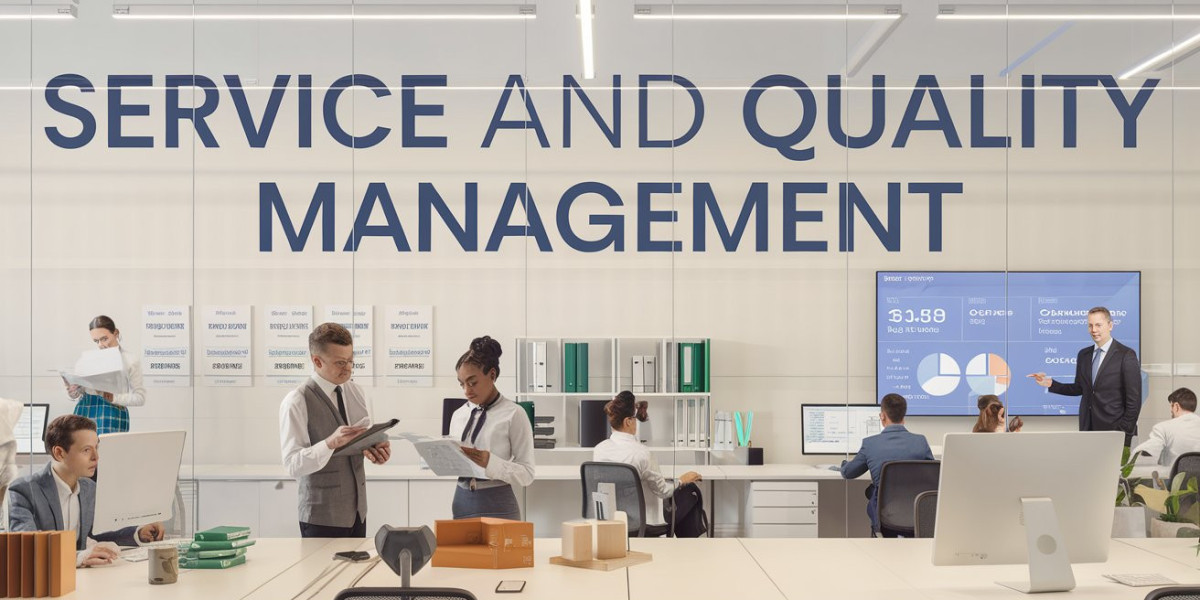In today's competitive world, service and quality management are critical to increasing customer happiness, loyalty, and operational efficiency. Organizations throughout the world are investing considerably in initiatives that ensure high standards of service and product quality. This essay delves into the significance of service and quality management, as well as the important benefits that firms may get by focusing on these areas.
What is Service and Quality Management?
Service and quality management are the processes, techniques, and strategies used to ensure that services and goods meet or exceed customer expectations. Quality management entails establishing standards, supervising processes, and monitoring results to ensure consistency and dependability. Service management, on the other hand, focuses on providing a consistent, gratifying experience from the customer's first engagement to after-sales assistance.
Together, service and quality management provide a comprehensive approach that improves the customer experience, increases loyalty, and lowers operational costs.
Key Components of Service and Quality Management
To build a robust service and quality management system, it’s essential to understand and implement the following core components:
Customer-Centric Approach
A customer-first mindset ensures that the organization listens to and acts on feedback, prioritizes customer satisfaction, and adapts to evolving needs. By regularly gathering insights from customers, companies can tailor services and quality standards to meet specific demands.Standards and Compliance
Industry standards, regulatory requirements, and internal benchmarks guide service and quality management. Ensuring compliance not only reduces risk but also enhances trust and reliability in the eyes of customers and stakeholders.Continuous Improvement
Both service and quality management require ongoing enhancement. Using methodologies such as Six Sigma, Lean, or Kaizen, businesses can identify areas for improvement and continuously optimize processes to increase quality and efficiency.Employee Training and Engagement
A well-trained, engaged workforce is the backbone of effective service and quality management. Employees should be empowered with skills, tools, and motivation to deliver high-quality service and products. Regular training sessions and clear communication about quality expectations are essential.Performance Monitoring and Feedback Loops
By tracking key performance indicators (KPIs) and establishing feedback loops, companies can measure quality and service levels in real time. Regular audits, customer surveys, and process reviews provide valuable insights into what’s working and what needs adjustment.
Take the Leap—Schedule Your Interactive Demo! https://axonator.com/request-for-demo/
Best Practices in Service and Quality Management
Implementing effective service and quality management strategies can be challenging. Here are some best practices to guide your organization toward excellence:
Set Clear, Measurable Goals
Define specific, measurable, achievable, relevant, and time-bound (SMART) goals that align with customer expectations and business objectives. These goals provide a roadmap for your team and a basis for evaluating success.Invest in Quality Management Systems (QMS)
A QMS enables systematic control of quality across the organization. These platforms help track and manage processes, maintain compliance, and support data-driven decision-making, making it easier to identify and resolve quality issues quickly.Enhance Communication and Collaboration
Effective service and quality management require strong interdepartmental communication. Regular meetings, collaborative platforms, and open feedback channels help teams align on goals and address potential challenges proactively.Empower Your Employees with Tools and Training
Employees are key to successful service and quality delivery. Empower them with the tools, knowledge, and authority to resolve issues and improve quality. Regular training on customer interaction, problem-solving, and quality control processes can drive significant improvements.Leverage Technology for Real-Time Monitoring
Digital tools like CRM software, quality tracking systems, and data analytics platforms provide real-time insights into customer satisfaction, product quality, and service performance. Automated monitoring helps teams respond proactively to any issues, ensuring a smooth and high-quality customer experience.
Benefits of Effective Service and Quality Management
The rewards of an effective service and quality management approach are significant and wide-ranging. Some key benefits include:
Increased Customer Satisfaction and Loyalty
Customers are more likely to return and recommend your business if they consistently receive high-quality products and service. This not only boosts brand loyalty but also reduces customer acquisition costs.Enhanced Operational Efficiency
Quality and service management reduce waste, minimize rework, and streamline processes. These efficiencies translate to cost savings and faster turnaround times.Improved Brand Reputation
An organization known for its quality and service gains a strong reputation, which can attract new customers and make it easier to enter new markets. High standards build trust and credibility.Regulatory Compliance and Risk Management
Staying compliant with industry standards reduces the risk of legal issues, product recalls, and customer dissatisfaction. A well-managed quality system ensures that products and services meet regulatory requirements.Higher Employee Satisfaction
Employees feel more fulfilled when they work in an organization that values quality and service. A strong quality culture empowers employees, boosting morale and productivity.
In a world where consumer expectations are higher than ever, service and quality management have become critical to business success. Companies can meet and even surpass expectations by creating organized procedures, focusing on continuous improvement, and prioritizing customer happiness. A focused approach to managing both service and quality can result in long-term benefits ranging from improved customer connections to a vibrant workplace culture and an outstanding reputation.
Building a culture of excellence in service and quality takes time, but it pays off by distinguishing your firm in today's competitive market.
About Axonator Inc:
At Axonator, our vision is bold and transformative: to mobilize the world. We see a future where businesses and communities are effortlessly interconnected through the power of mobile technology. Our mission is to equip organizations globally with cutting-edge mobile solutions, unlocking new possibilities for innovation, efficiency, and seamless collaboration in every facet of their operations.
Contact:
Axonator Inc. (The World On Mobile)
Austin, TX, USA
USA: +1-716-274-8885
India: +91-8600-032-635
Email: support@axonator.com
Website: https://axonator.com/







